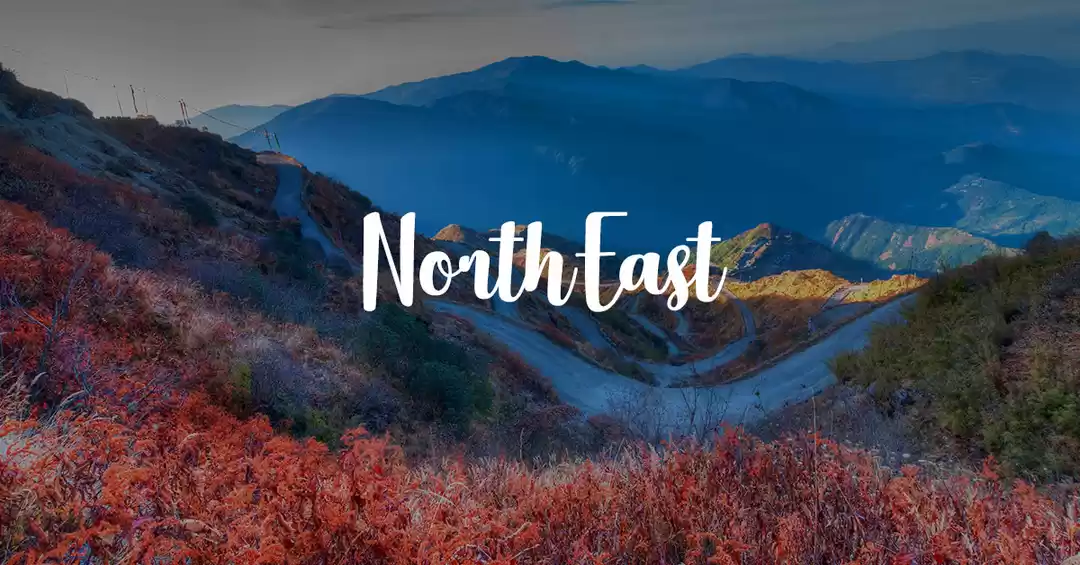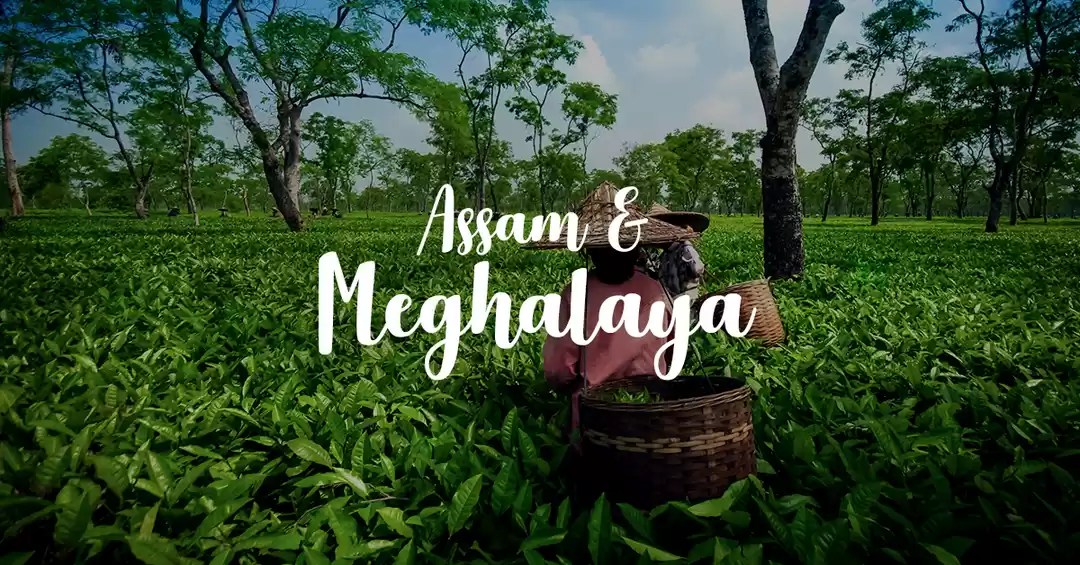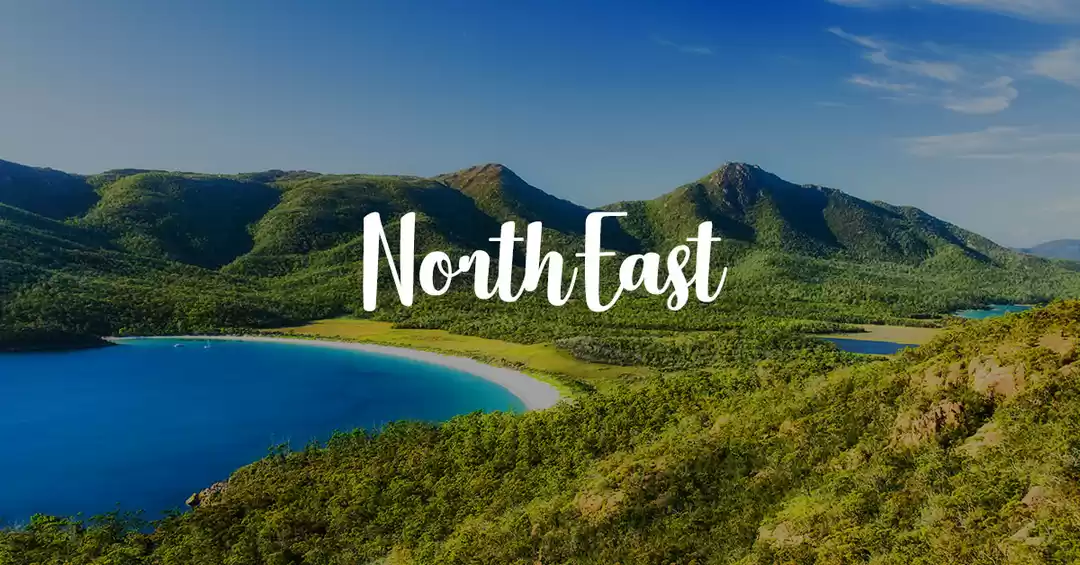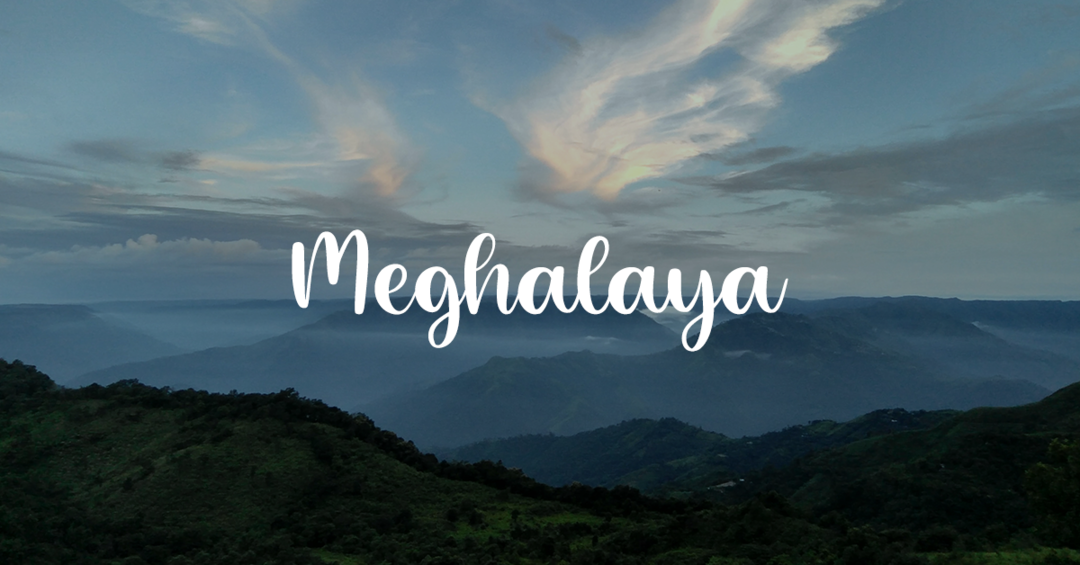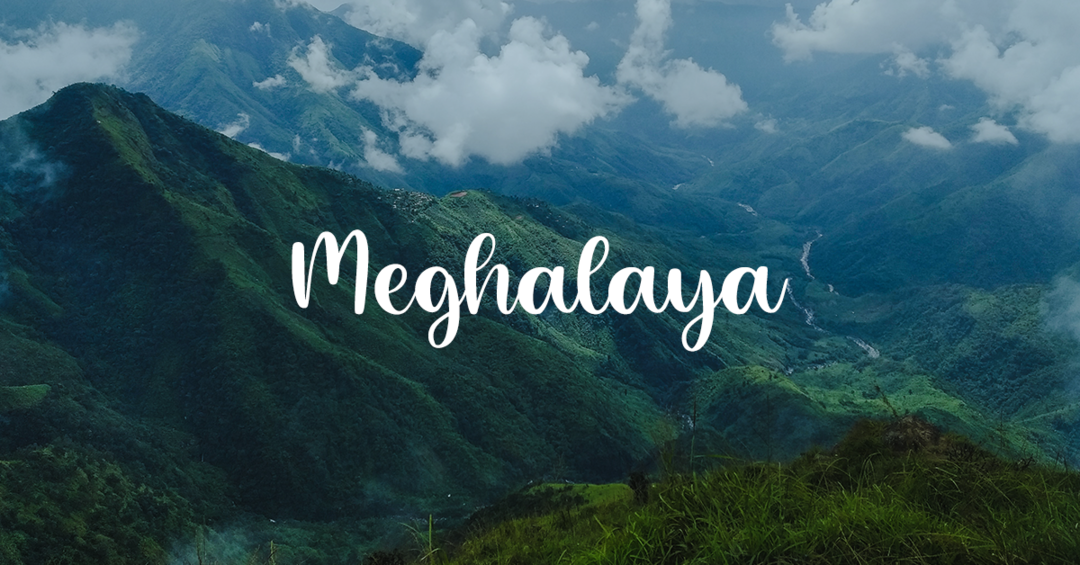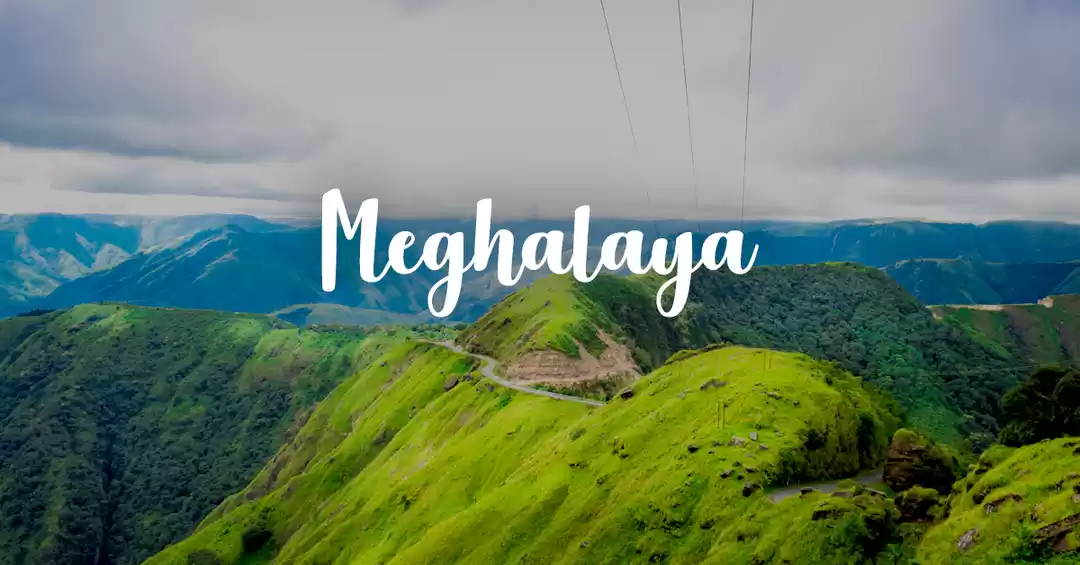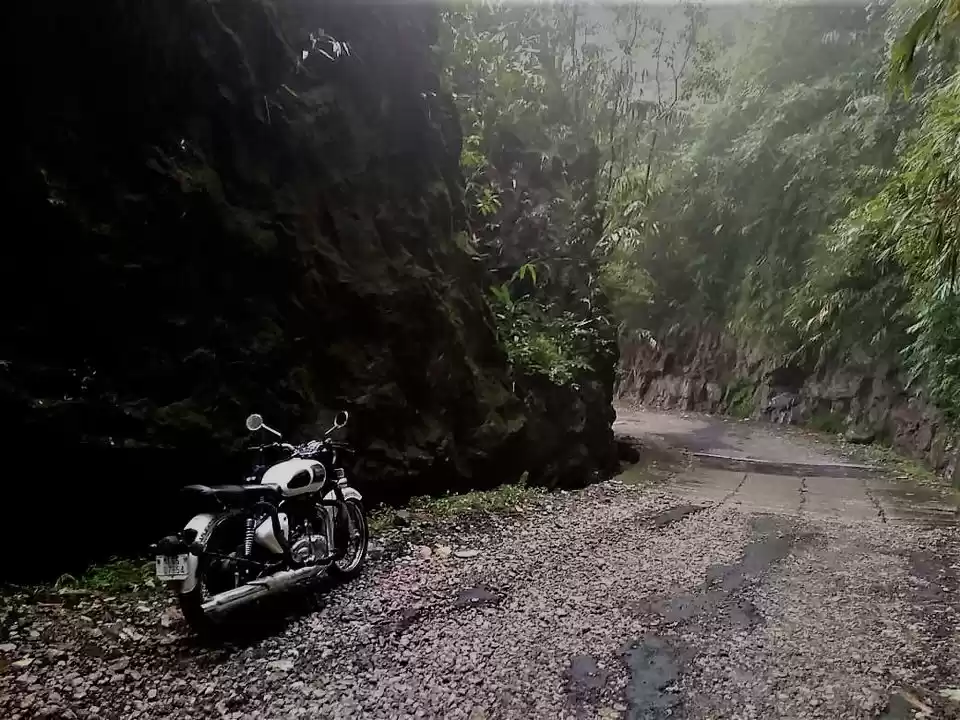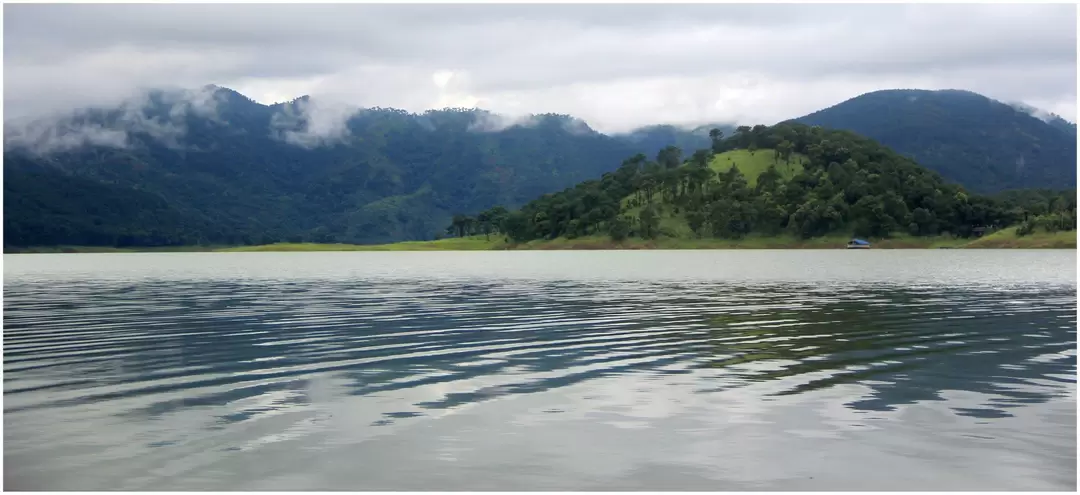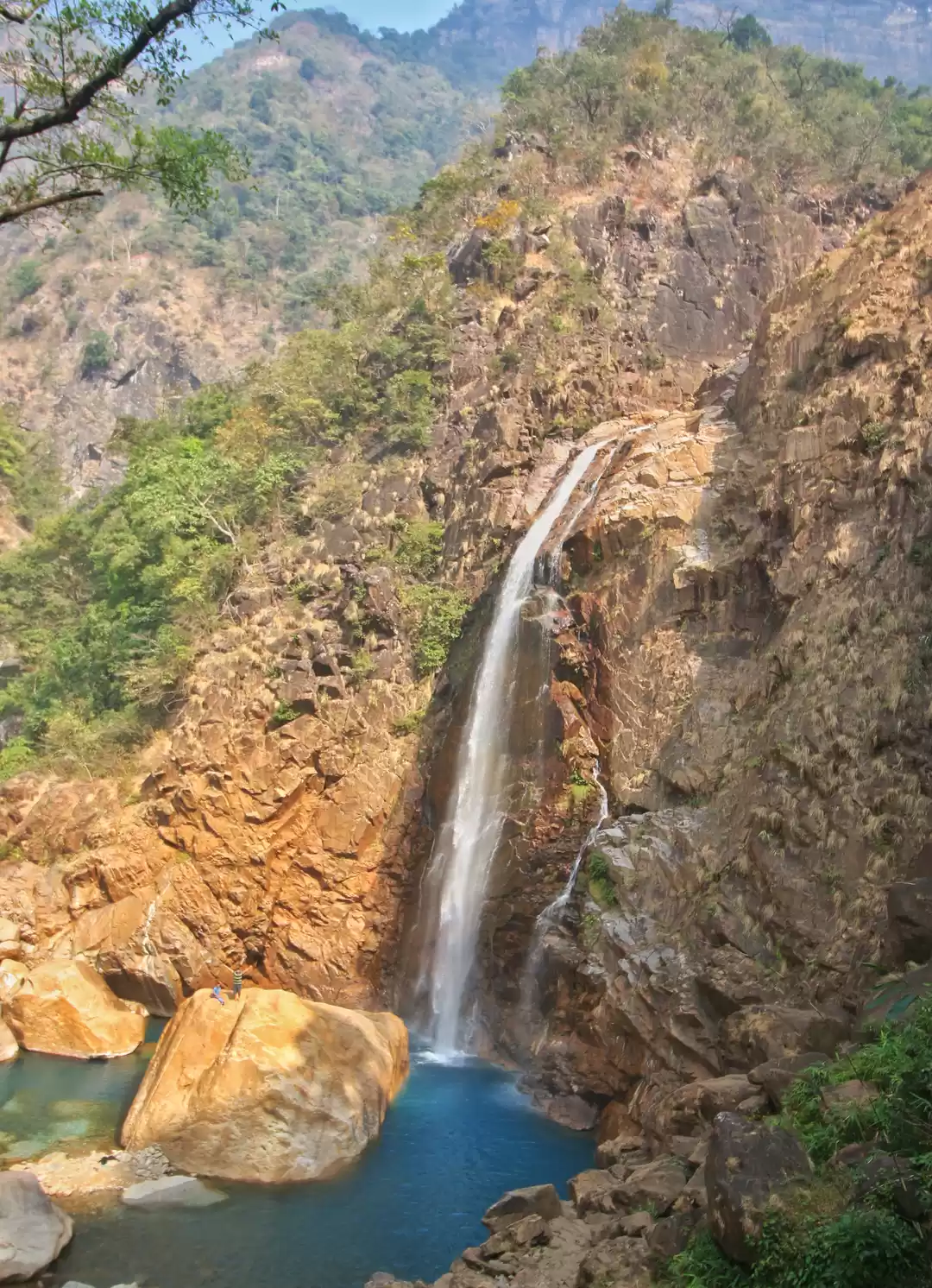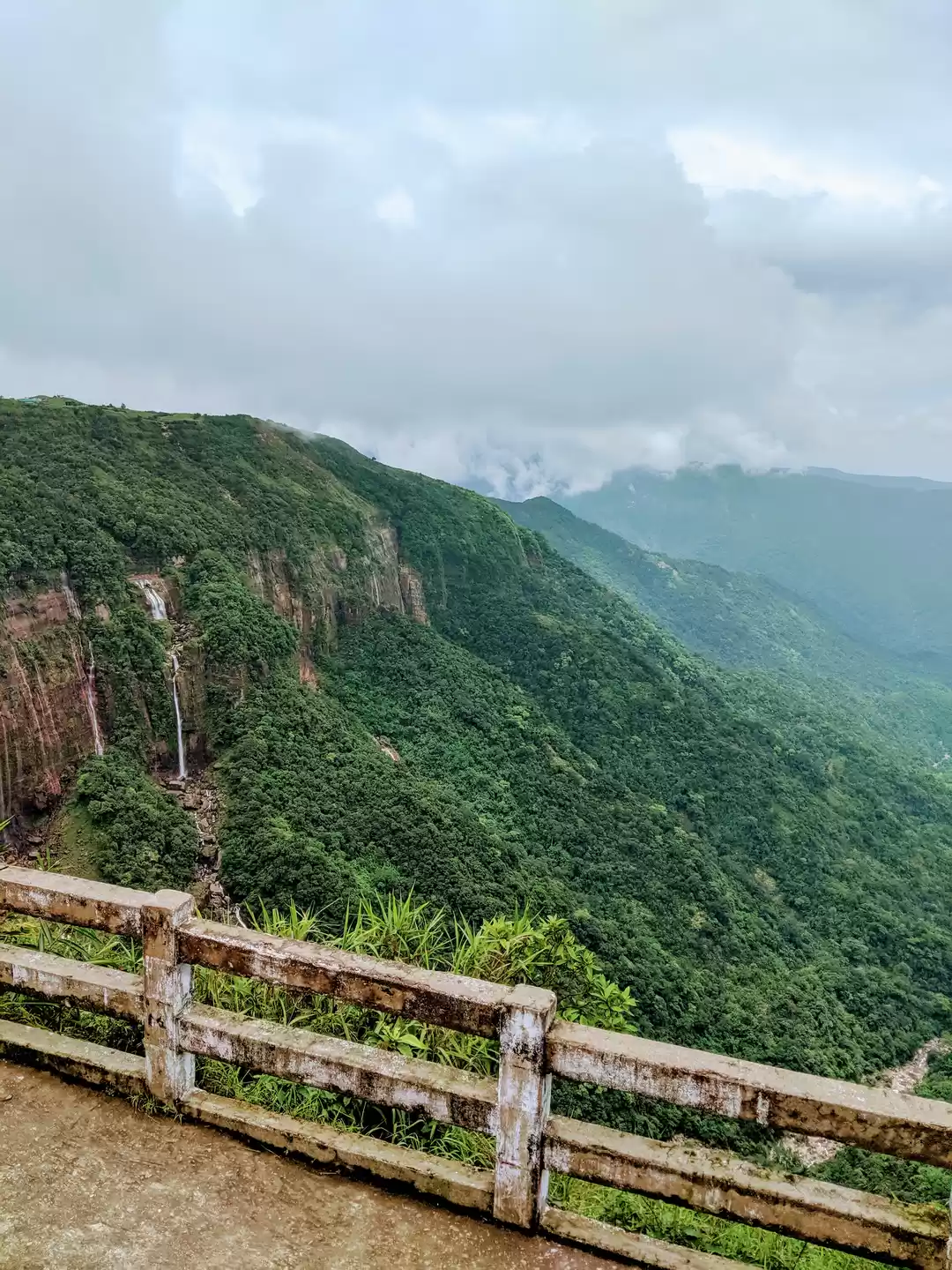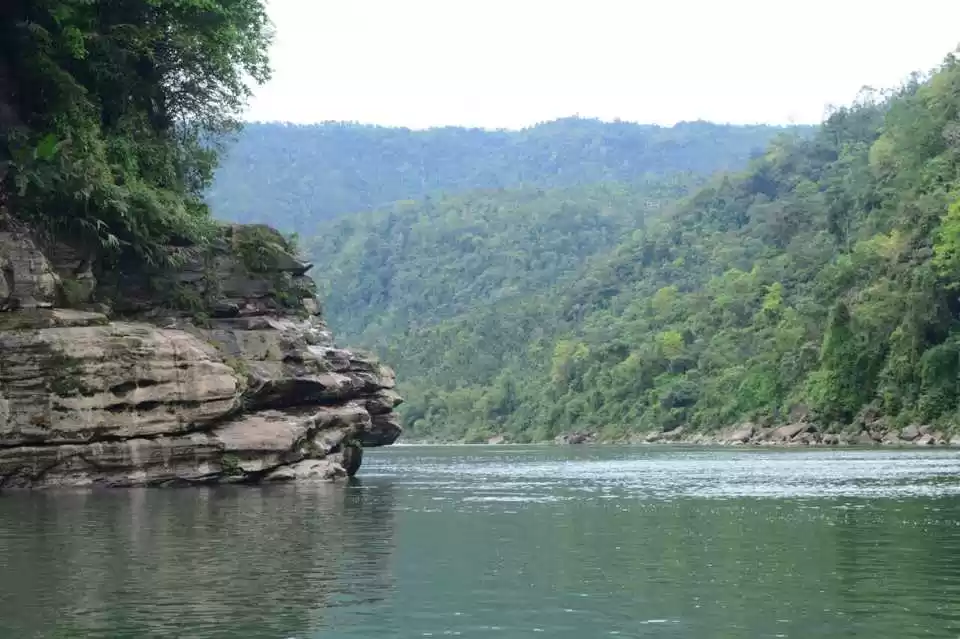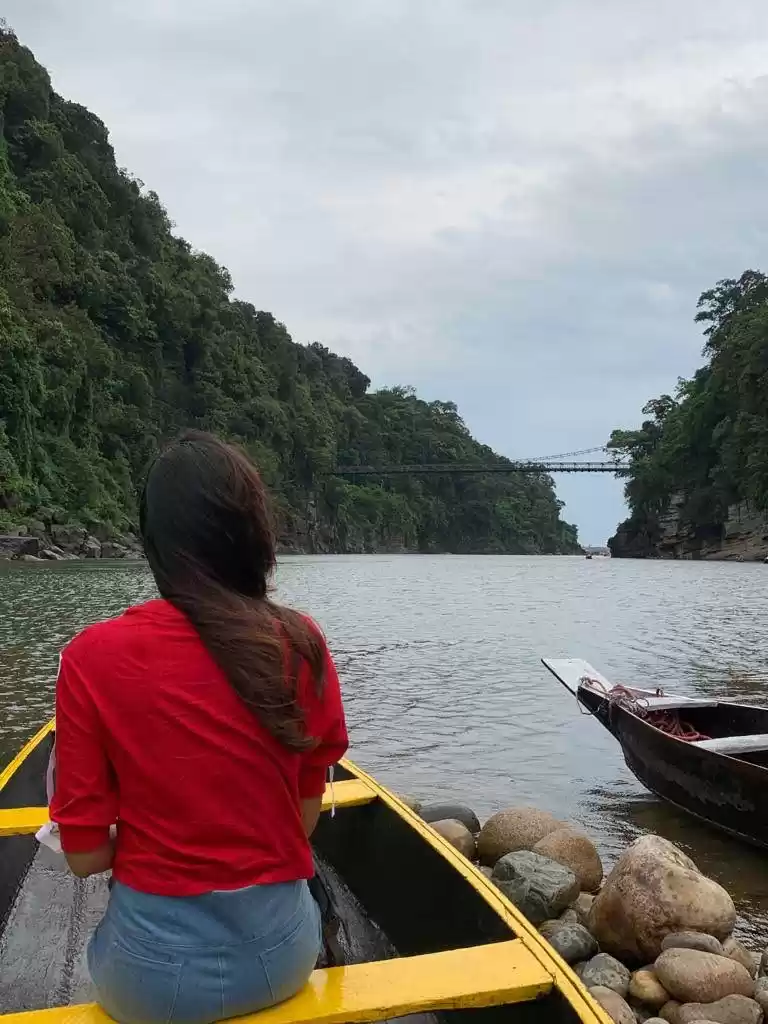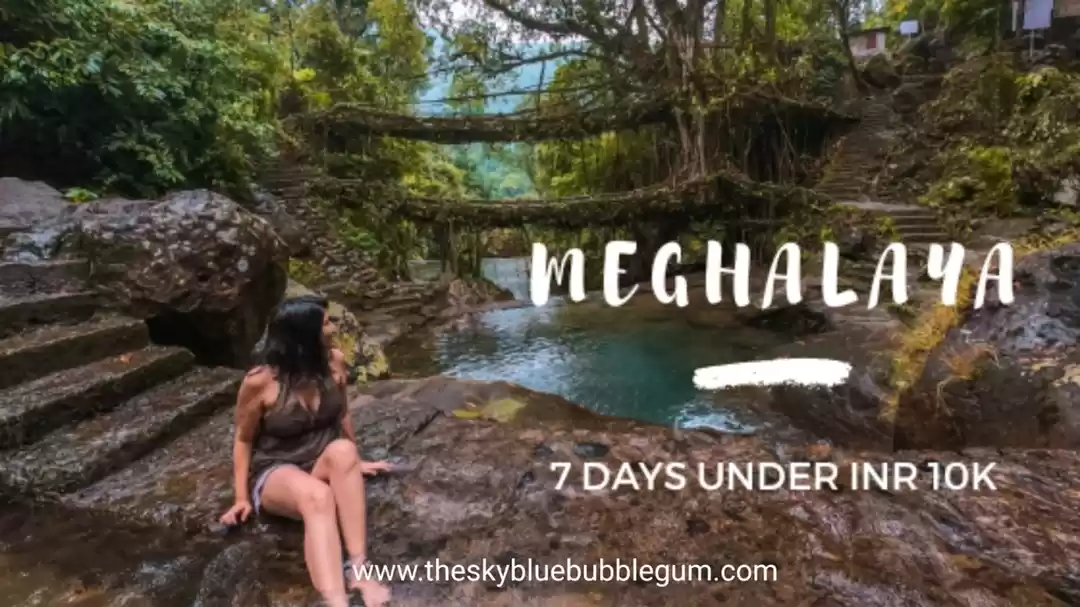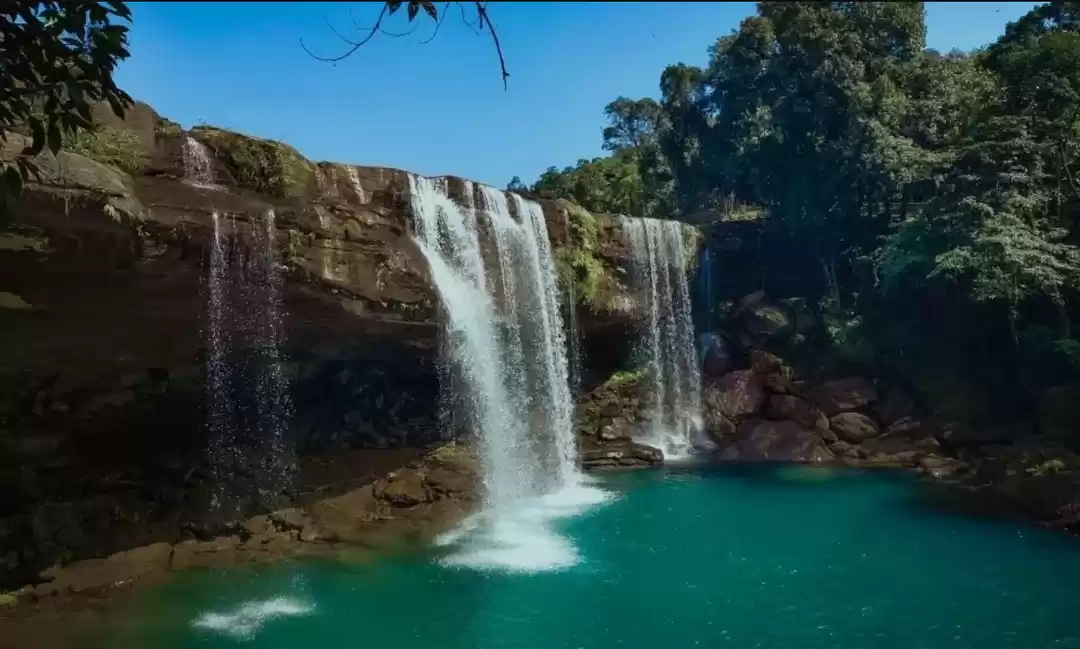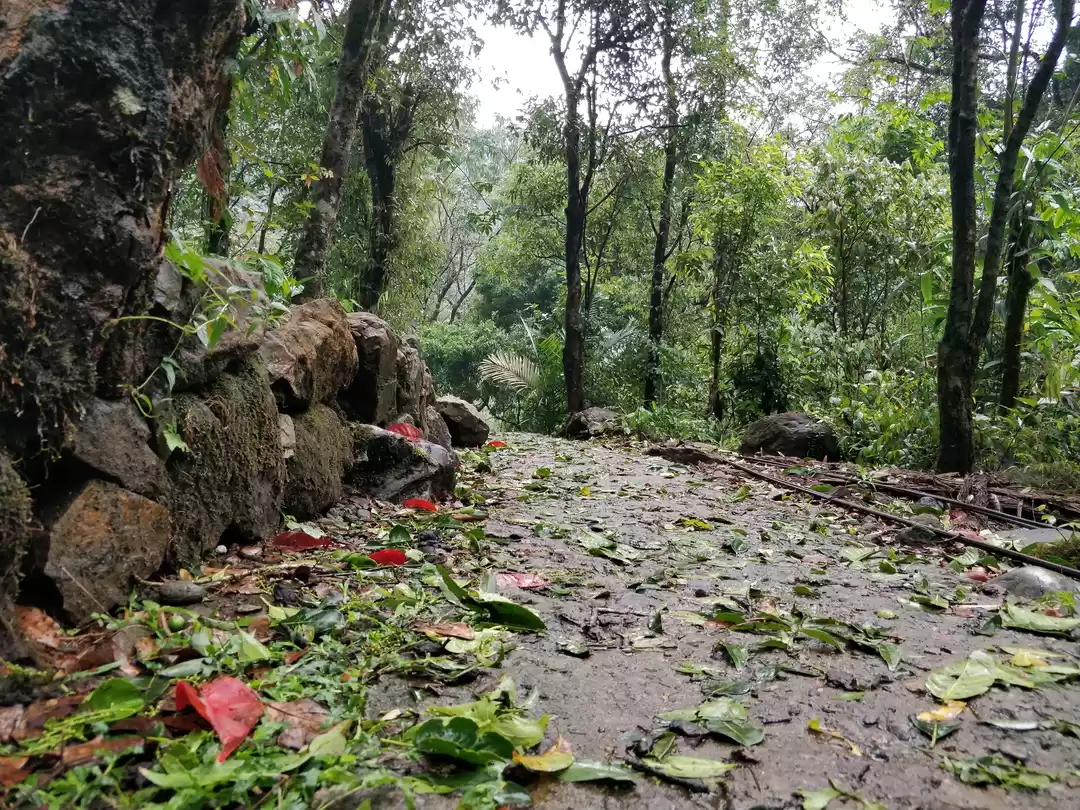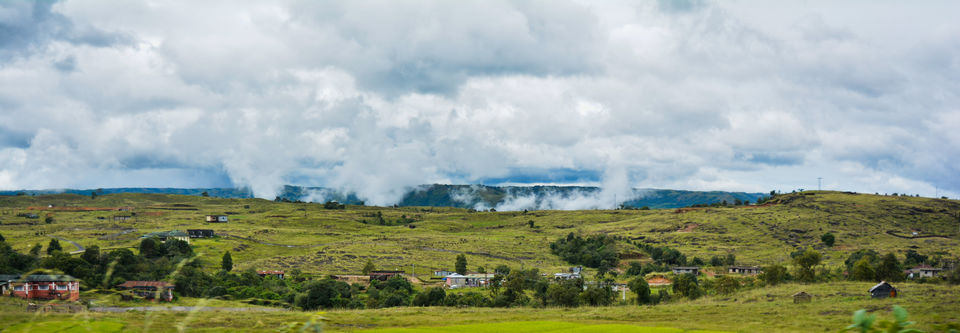
They say the mountains never leave you, and as cliché as that sounds, I've found it to be true. There's something sublime about standing at the edge of the road, looking at layers and layers of mountains in front of you, fading away in the distance, wondering how they were formed many many years ago, all for you to stand and stare at today, a chill in the air, the wind in your hair and camera poised, knowing full well you'll never be able to do justice to the magnanimous beauty in front of you by capturing it in such a small frame.
Will they be here tomorrow?
.
I’m a creature of the mountains, always have been. Nothing gets me more excited than layer upon layer of massive mountain ranges disappearing into the horizon. So when I got the chance to take a weeklong trip to the abode of the clouds’, there was no second thought. My friend and I booked flight tickets, but consciously decided not to plan the full 7 days, and just go where the curving mountain roads took us, chasing clouds and hunting for hidden turquoise blue ponds in the lush green wilderness.
Day 1
Guwahati to Shillong:
Landing in Guwahati, we took an airport AC bus right into the heart of the busy, noisy city of Guwahati. If you have time, you can hang around here and visit a few famous temples, but we weren’t the religious type, so off into the mountains it was, immediately! Sitting on your rear end for 5 hours straight can be a bit of a bummer (pun intended), but the higher you go, the cooler and stronger the wind gets, and soon the hard seat is not the problem anymore. The clouds would tease us with occasional drizzles, and the sun would admonish them occasionally with bursts of sunshine.

We reached Shillong around 4pm, enough time to ride around this cosy hill-town, with a bakery around almost every corner. We threw our backpacks into the third hotel we found at Laitumkhrah, a decent neighbourhood filled with great cafes and restaurants, took a quick hot bath, and set off to a small restaurant to have hot momos and soup for dinner. The warmth of the air steadily dropped with sun, and as we observed from our perch on the road-side café, Shillong grew busier with the night. Taxis plied, vegetable vendors harped, and the busiest square of Shillong shut shop only around 10.45pm, by which time were well snuggled in our warm blankets in slumber.
Day 2
Shillong to Cherrapunji:
The plan was to drive all the way till Cherrapunji, until the sun sets. That’s the best part about not booking stays in advance, you can choose to ‘stand and stare’ like Robert Frost yearns. This time prepared, we donned our rain-gear before setting off. Following the traffic out of Shillong, we stopped at Elephant falls, first. A tourist spot it is, yes, but we did enjoy the first of the many falls we would spot in soon.
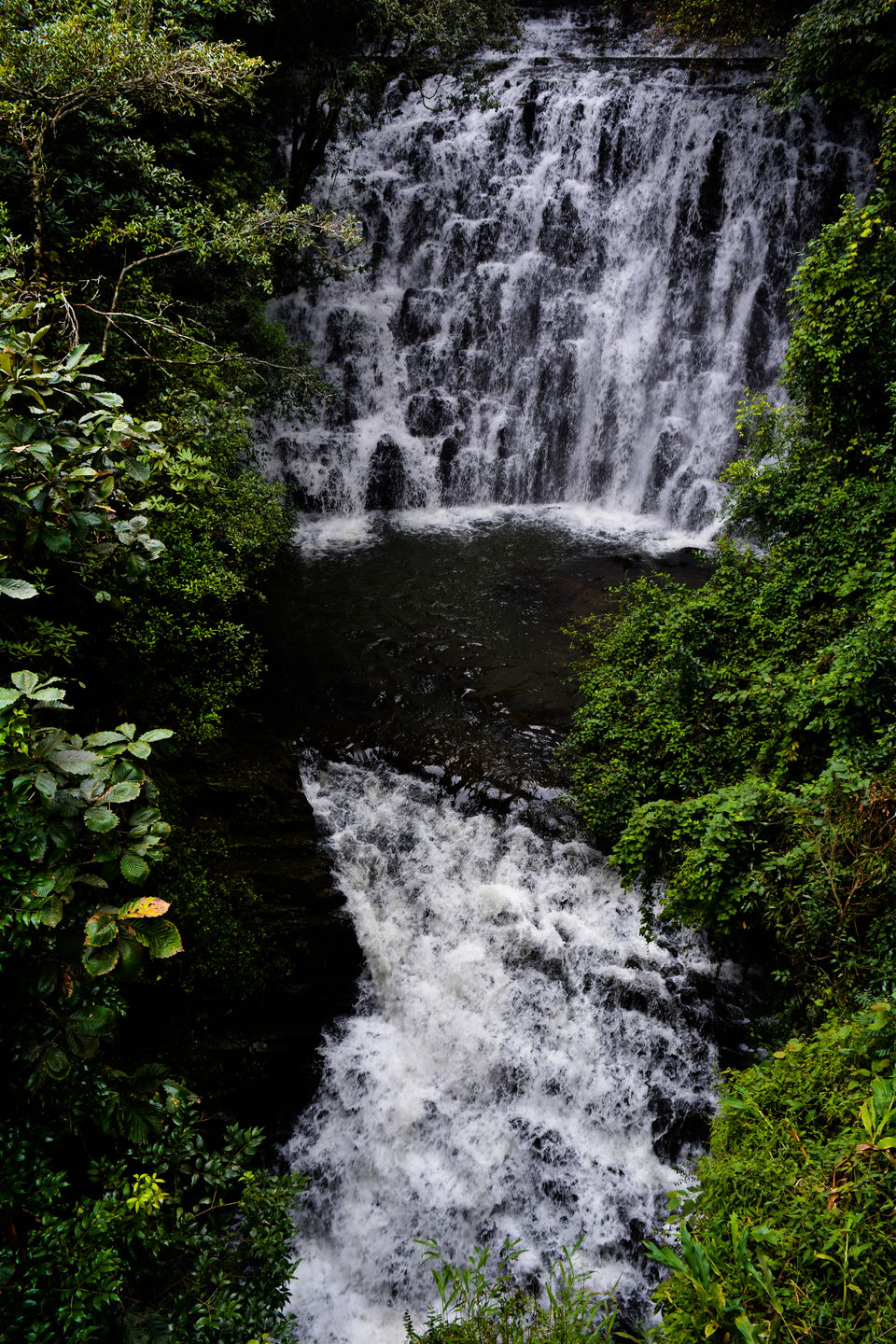
From Elephant falls, we hit the road again. The highway juts on the edge of the hills, and if we hadn't stopped for a ‘hot-maggi’ break, we would have missed to notice this red-riding lad zip-lining right across two mountain ranges.
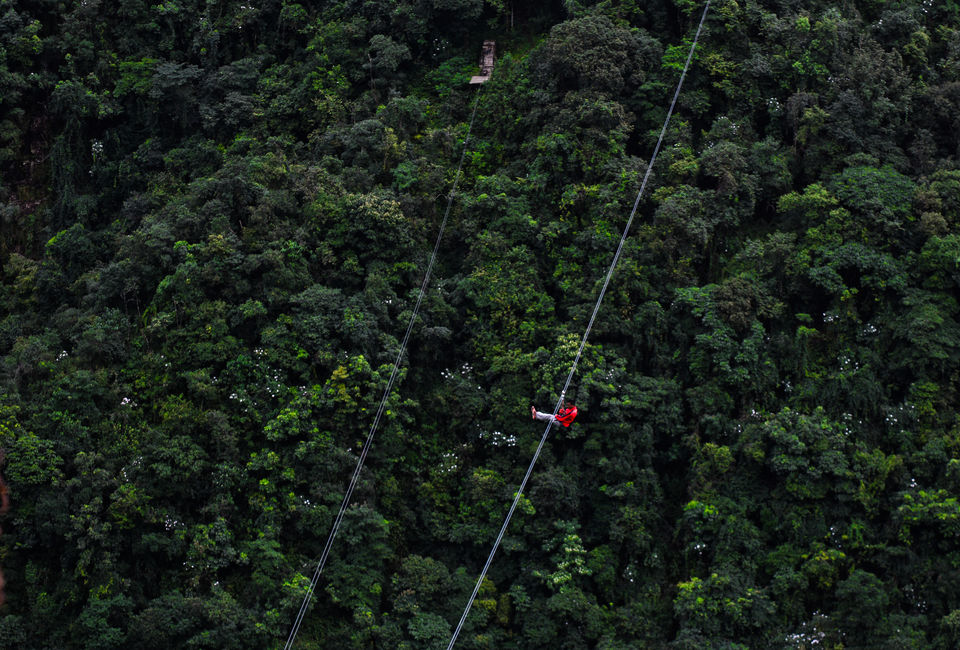
Rushed to the spot, paid, and waited our chance. (It costs Rs.800, non-refundable once paid. Many get cold feet when it's their turn, but, thankfully, I wasn't rich enough to have that luxury.) It was my first time, to trust a narrow metal rod, and some small metal equipment, with my life. And I loved every bit of that frightening ride across a deep valley, a strong wind teasing me that I'm going to fall to my death any minute. The local guy who helped me could only laugh at my face when I reached the other end. Tip: Don't carry valuables. Don't look down, look sideways. Listen to the instructions carefully.
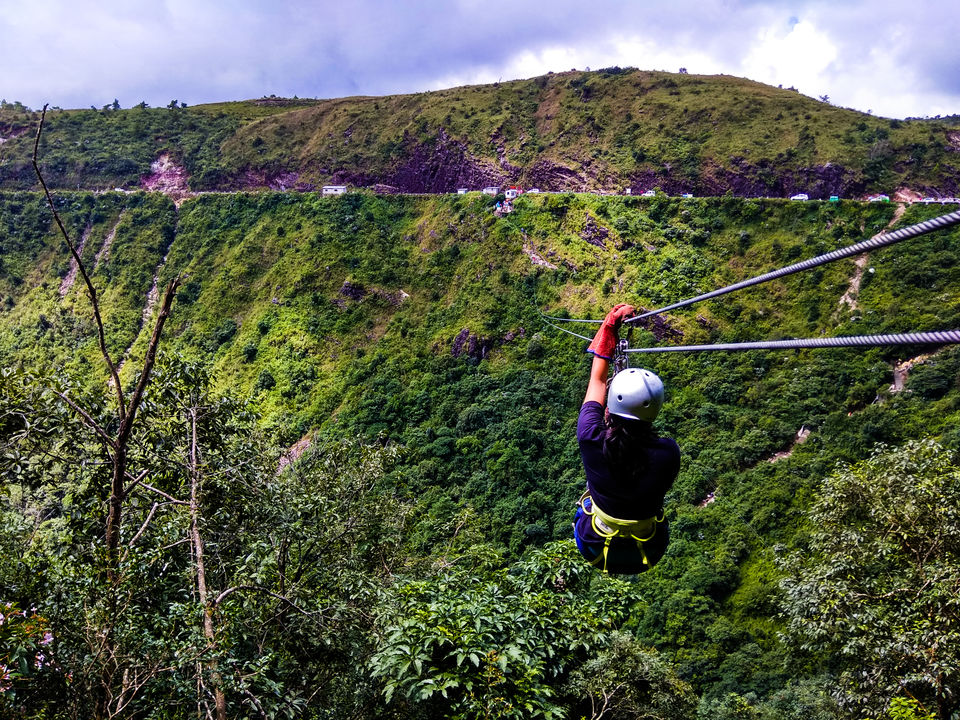
Back on the highway, it soon transpired why this is ‘the abode of tehe clouds’, the blackroad had disappeared into a wispy, cold fluff of moving grey clouds!
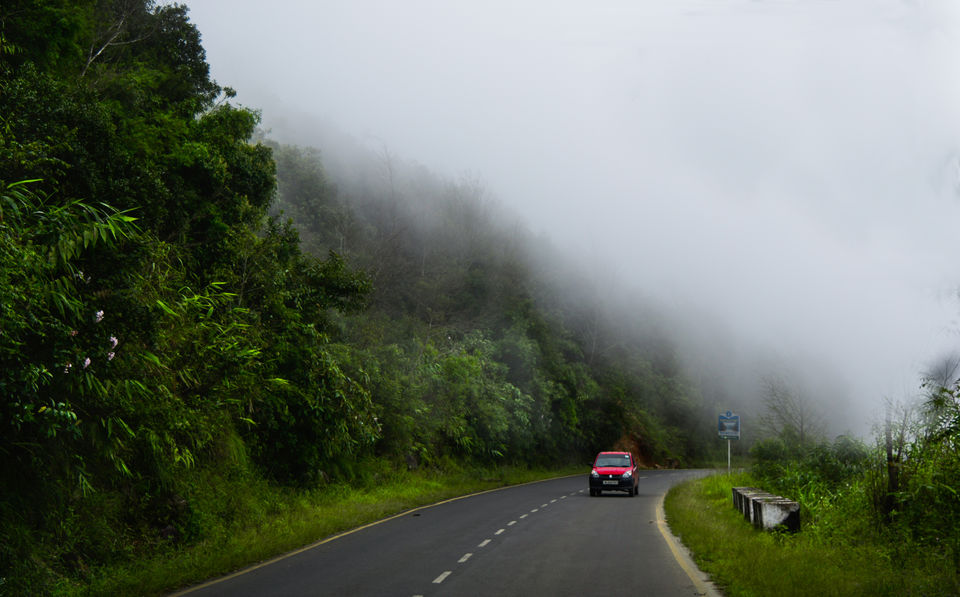
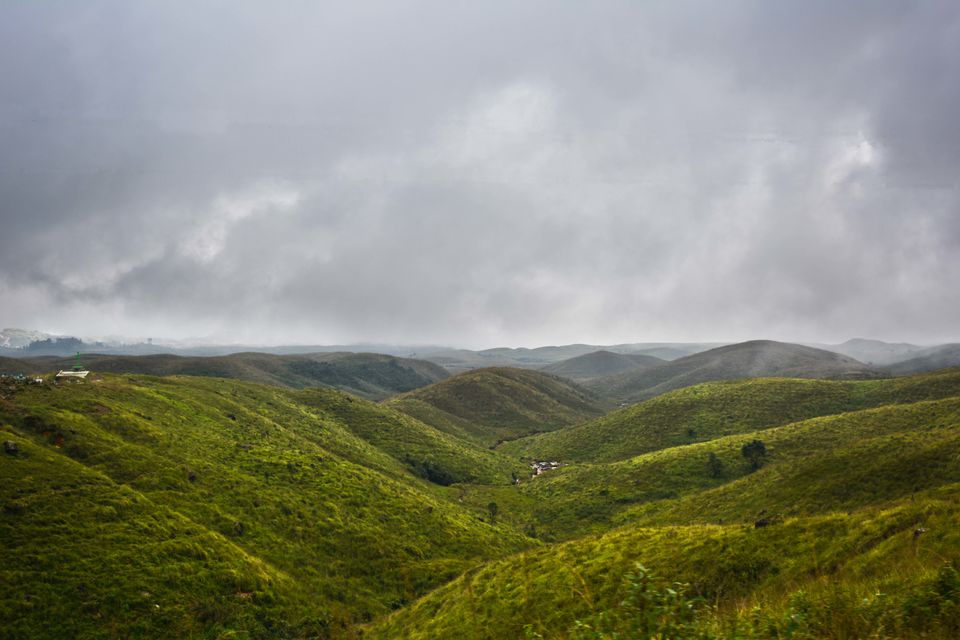
A slight diversion from the highway takes you toward Nohkalikai Falls, probably the most-photographed falls in Meghalaya, and also the tallest plunge waterfalls in India. If you already don’t know, the legend behind the falls is slightly disturbing. Here goes: In a village upstream from the falls, resided a woman, Ka Likai, (Ka - prefix given for women in Khasi). She worked as a porter, leaving her infant daughter at home. Her second husband (first husband had died) was jealous of the child, and one day he killed her, cooked her meat and threw away her head and bones. When Ka Likai returned home, ate the meal prepared and ready, and started searching for her daughter and husband. Ka Likai usually had a betel leaf after her meals, and she found a severed finger near the place where she usually cut betel nuts & leaves. She realised what had happened, and went mad with anger and grief and started running. She ran off the edge of the plateau and the waterfall where she jumped from was named Nohkalikai Falls after her.
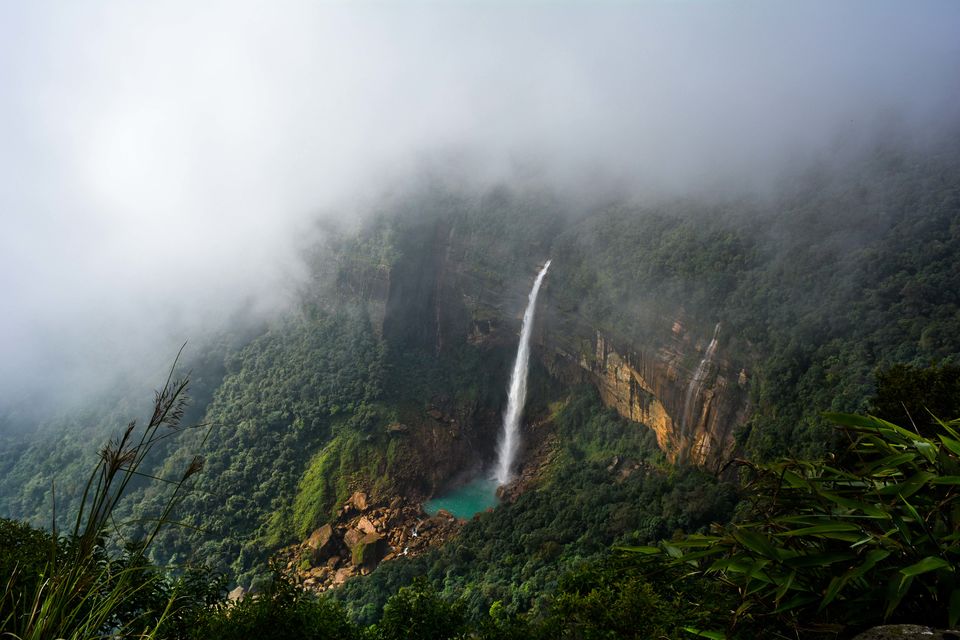
Well, if scary story aside, the falls itself is a beautiful as can be. A veil of clouds closes around the falls every now and then, and you have to wait to catch a glimpse of the beauty.
A set of steps seemed to lead right to the bottom of the falls, cutting and criss-crossing along the side of the mountain face. Why not find out where it goes, eh? A half-hour into the descent, the steps became wet, slippery and darker, overgrown with plants. The watch said 5.30pm. Insects screeched louder. Telling ourselves to be more adventurous, we continued descending. At one point, we crossed two men on their way up, narrow timber logs on their shoulders. They mimed to us to not go further down (we didn't understand their language). We didn't take them much seriously till we noticed their feet - smeared with red, fresh blood. Abandoning adventure, we followed them back up. They were much faster though carrying heavier weight.
Finally back at viewpoint, we asked a woman at a small kiosk- where do the steps lead? "To the bottom of the falls. But it's open only in summer, now it's too dangerous with heavy water flow," she said. Glad to have not gone all the way then!
Much later, we realised the blood could have been from leeches.
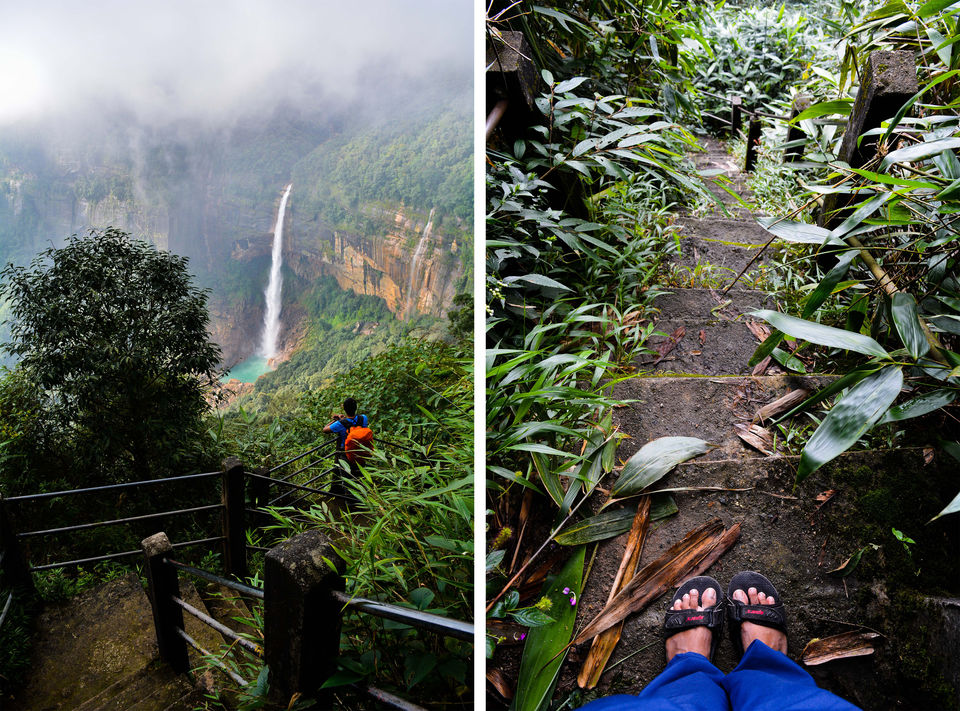
We got back on the road, and after a few kilometres found a decent homestay in a small town along the highway. A late evening walk up to a small hillock, we caught the sun shining its last rays through the mountains, seated amidst high grass plains. We soon realised we were sitting amidst grass filled with the itchy-spiky black worms and shouting, ran down the hillock much to the amusement of the local kids playing football on the street below.

Day 3:
Cherrapunji- Tyrna- Nongriat
The living-root bridges of Meghalaya are well hidden inside its forests. Tyrna is the last point till which vehicles can ply. You can park your cars/bikes here, get a parking ticket (Rs.40) and begin trekking down the concrete steps toward Nongriat, the village where the Khasi tribes live, the legends who built, or rather wove, the living-root bridges. (Tip: The local Khasi boys will offer to be your guide throughout the 3-hour trek for Rs.800, but it’s not really necessary unless you have heavy luggage, or are not the wilderness outdoor-y type). IG you’re lucky, it won’t be raining, so you don’t have to worry about tripping while walking down the 3000 or so steps (I lost count).
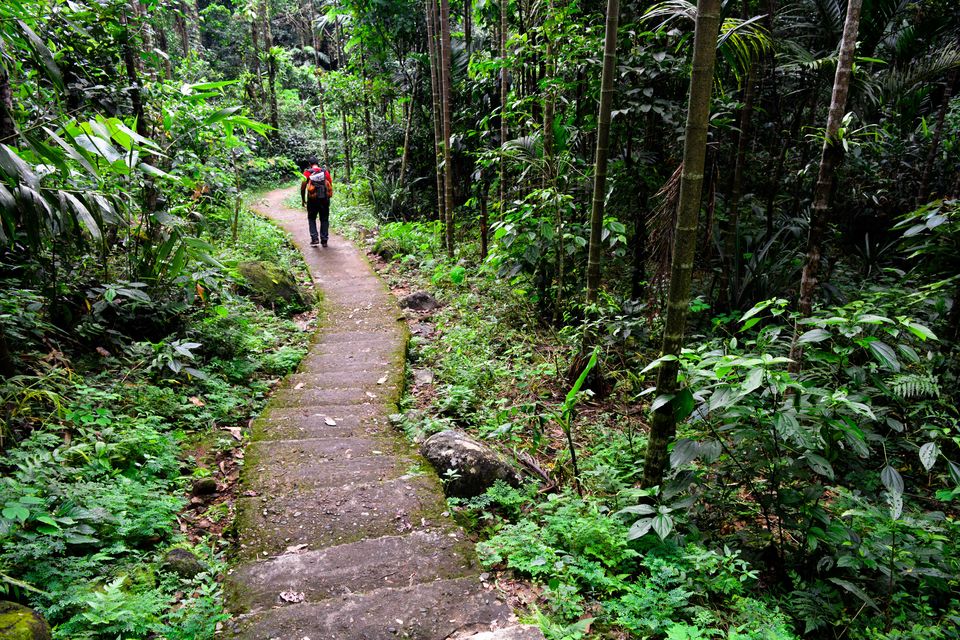
The deeper you descend, the louder the nosies of insects around you, and larger the butterflies become. You will soon find yourself right amidst the wilderness, not a soul in sight, the concrete steps the only markers of any civilisation.
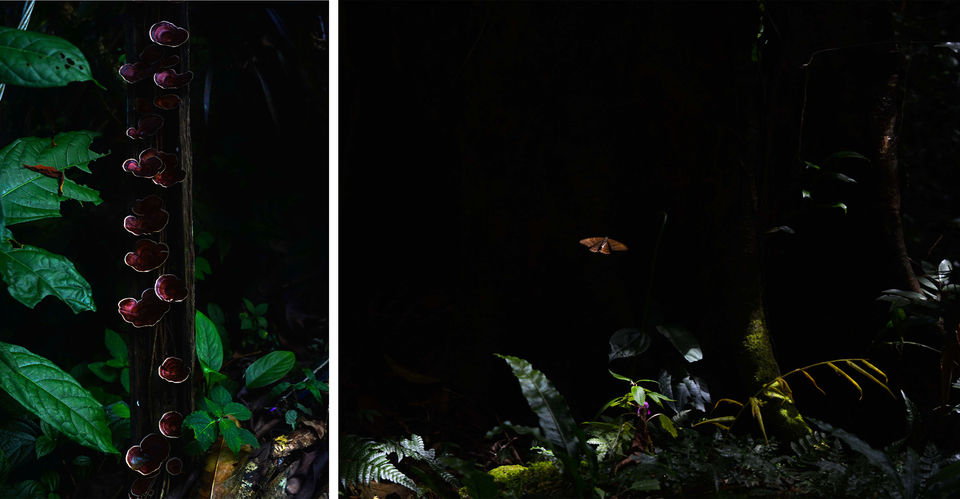
You have to descend for two-thirds of the journey, and if your knees aren’t feeling weak already, you have to cross two narrow bridges across deep gorges, along the way. When you first come across the narrow iron-rod bridge, you would probably regret not hiring the guide back up there. Just one foot wide, rusty and fragile - almost feels like you're floating above the river. I have no idea how I still managed to take my camera out. Probably best to just hold tight to the iron railing, look-straight ahead, and if possible hum loudly to prevent the noise of the thundering water below.
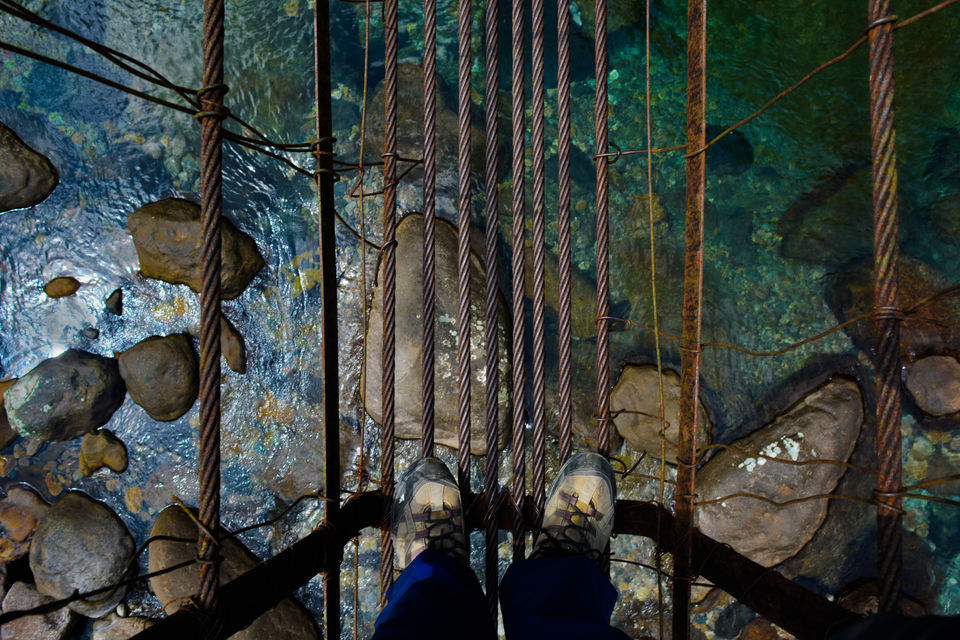
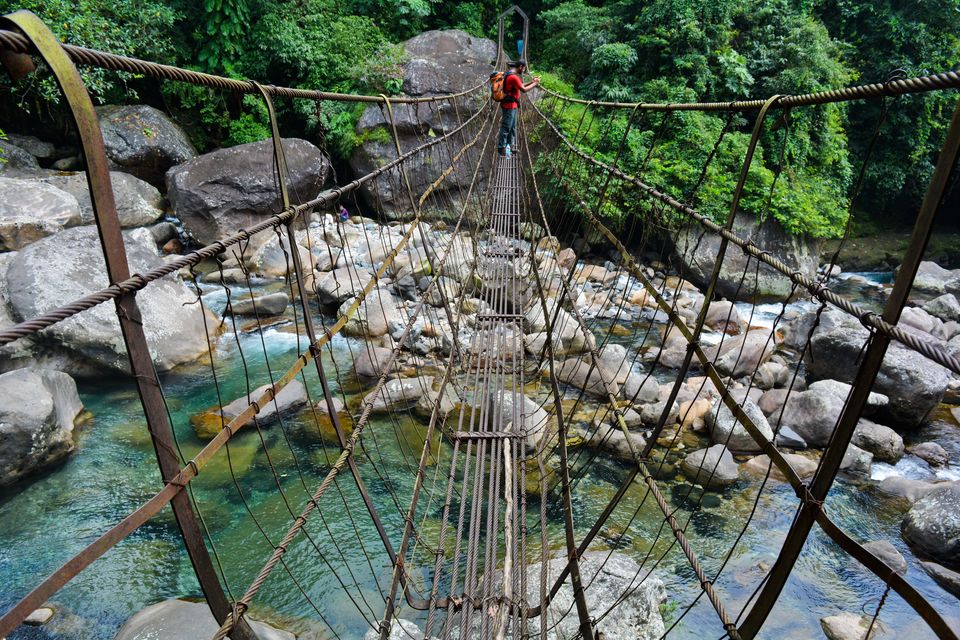
The second bridge is far less scary, with a wider base, stronger criss-cross steel and a small shop selling Maggi at the end as a reward. After two hours of no people, no food, and lots of walking, nothing tastes better to sit at the edge of the cliff and indulge in warm spicy Maggi!
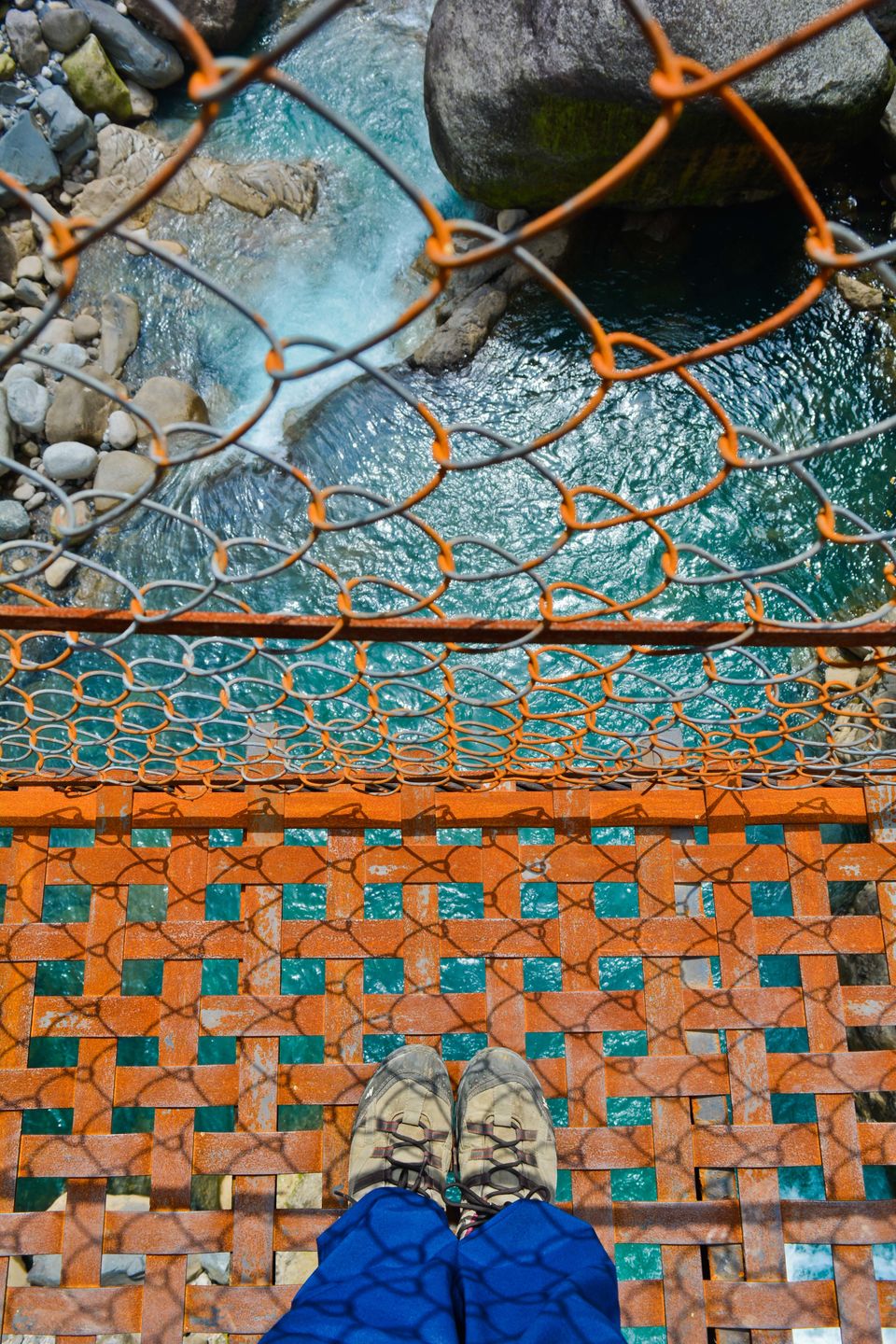
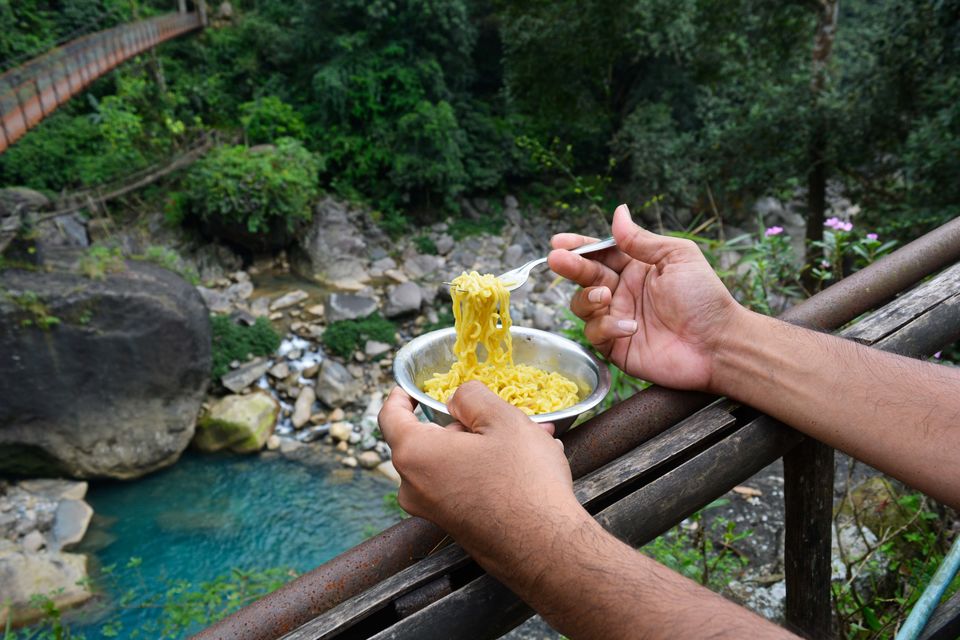
After that, a short ascent leads you to the old village of Nongriat. There are only three homestays here, and we chose to stay with Santina’s homestay, a kind Khasi women whose smile was welcome enough after the unnerving journey down here.
That evening we walked to the double-decker root bridge, and as the monsoon had just ended, the small waterfalls and pond was accessible. Sitting right inside the pool, the evening was spent gazing at the root-bridge, wondering how many years the roots of the Banyan tree would have grown stronger, holding the many feet that crossed over it.
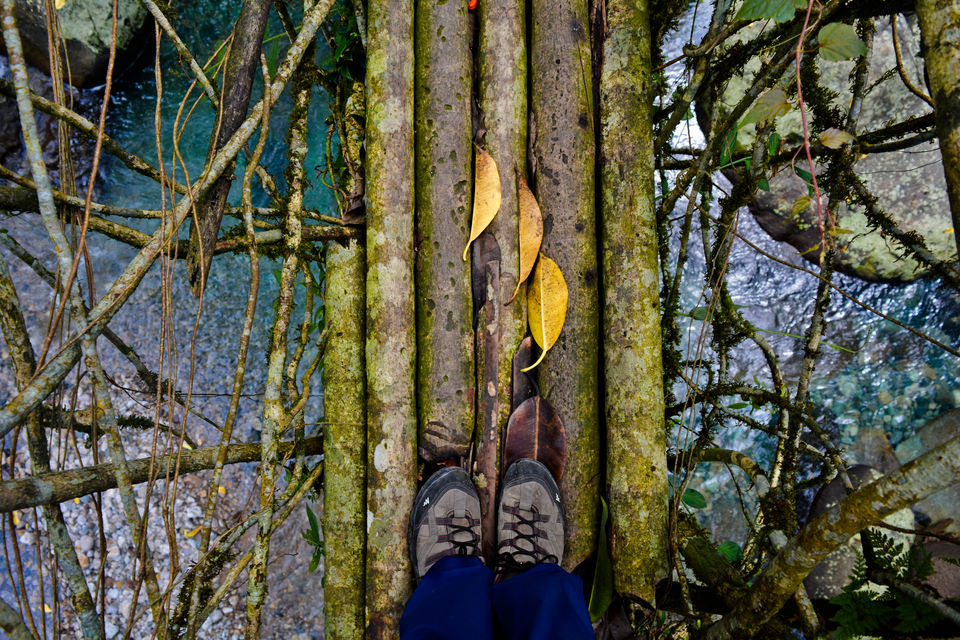
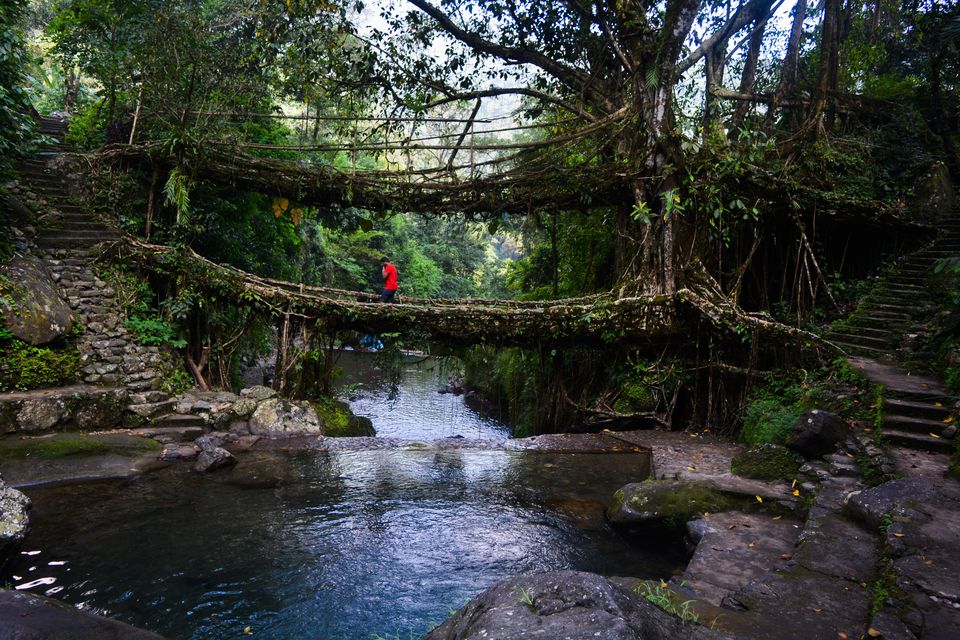
Day 4:
Nongriat
A short, but rough, trek from Nongriat will lead you toward the Rainbow falls. We were told by a fellow traveller the previous day, that off the beaten track, if we dared to explore, we could find secret hidden pools of water to take a lonely dip. We started our trek around 10am, Santina’s packed lunch in our small bags, with a quest to reach rainbow falls, and also find that hidden pool of turquoise beauty.

One more root-bridge and one frail wire-bridge later, we felt suddenly a bit lost and unsure. How do we know where to step off the track? There are no sign-boards in this wilderness, and we spent a good few minutes just walking along the path, hoping Mother Nature would guide us. A short jump from a rock, hidden beneath tree branches, we heard a faint sound of a waterfall, and something told us this was it. Exhilarated, we trekked further down, and alas, found one of the many such hidden pools in the forest.

There was not a soul in sight. Taking some time to protect our belongings and clothes from the wind, we waded as far as we dared into the bone-chilling waters. Imagine this: water gushing pleasantly all around you, a small falls in the distance, leaves raining down occasionally from the trees and gentle sunlight offering warmth.
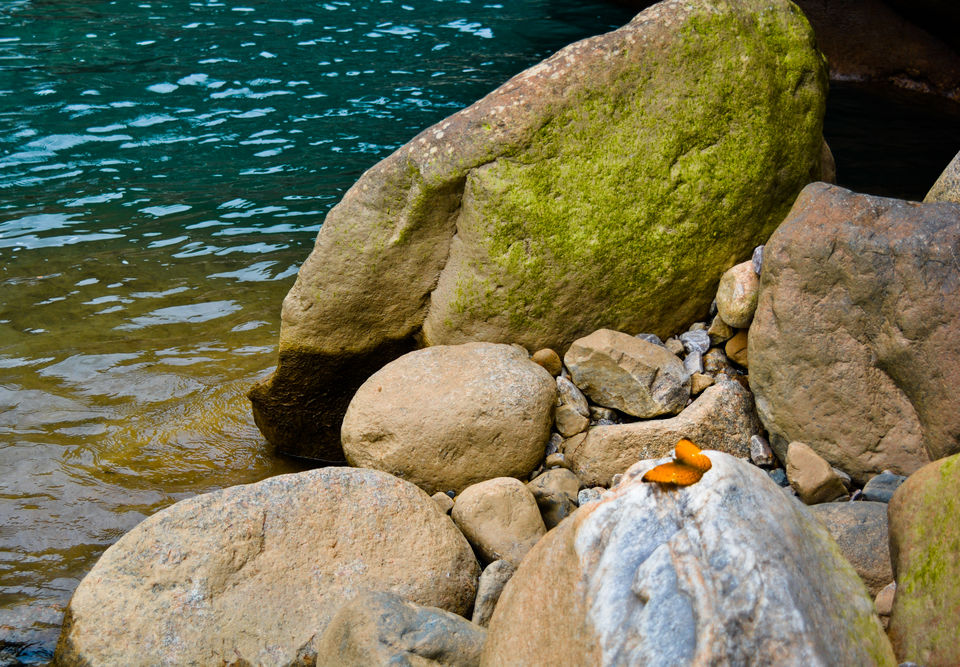
We never made it to Rainbow falls. We spent the whole day in the pool, chasing bubbles and butterflies. And by afternoon, it began to rain, and we had to rush ourselves underneath a rock, where we stayed till the rain stopped and headed back home. As we neared Nongriat, a bunch of boy were returning home from a game of football, and we made our way back the root-bridges, pleasant company and conversation. There's a hidden football ground somewhere in this jungle, where the kids play until the sun sets and as the last of its rays leave this side of the Earth, they make their way down to the stream, muddy shoes and aching feet, dive into the cold, dark waters, making merry, before heading back up to their homes for a spot of warm dinner made by their mothers, and hitting the bed early to rise and do the same again, tomorrow.
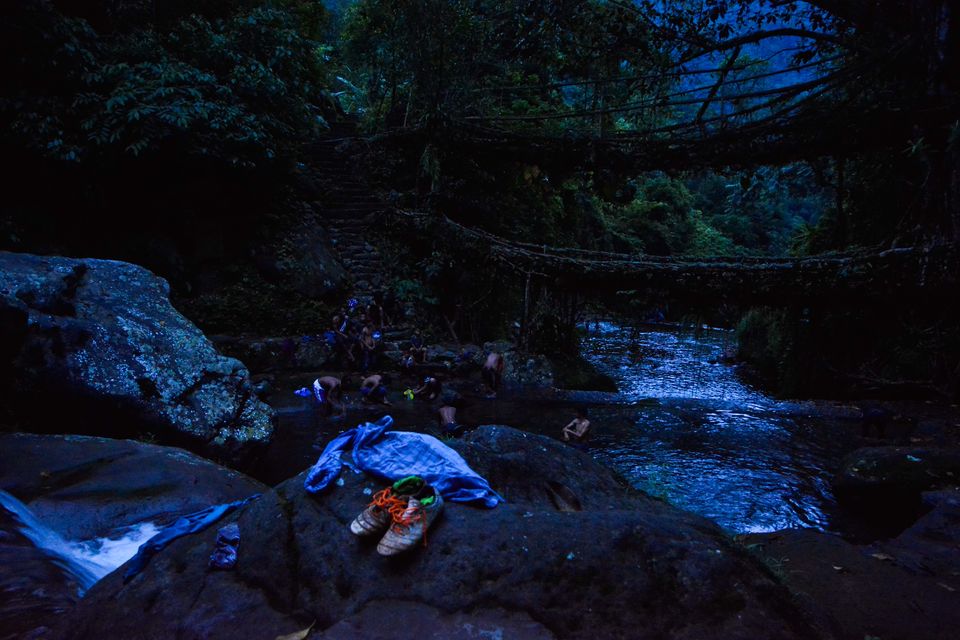
Dinner that night was pleasant, with rice and dal, fresh spinach soup and a spicy omelette. Santina’s husband returned from fishing with a basket full of toads for dinner, which we politely refused, trying not to let the panick show on our faces.
Day 5:
Nongriat –Tyrna- Dawki
We hated to say goodbye to Santina and her home, her children and this cute kitten that was their pet. Though the homestay was really tiny and basic, it felt very warm and caring.
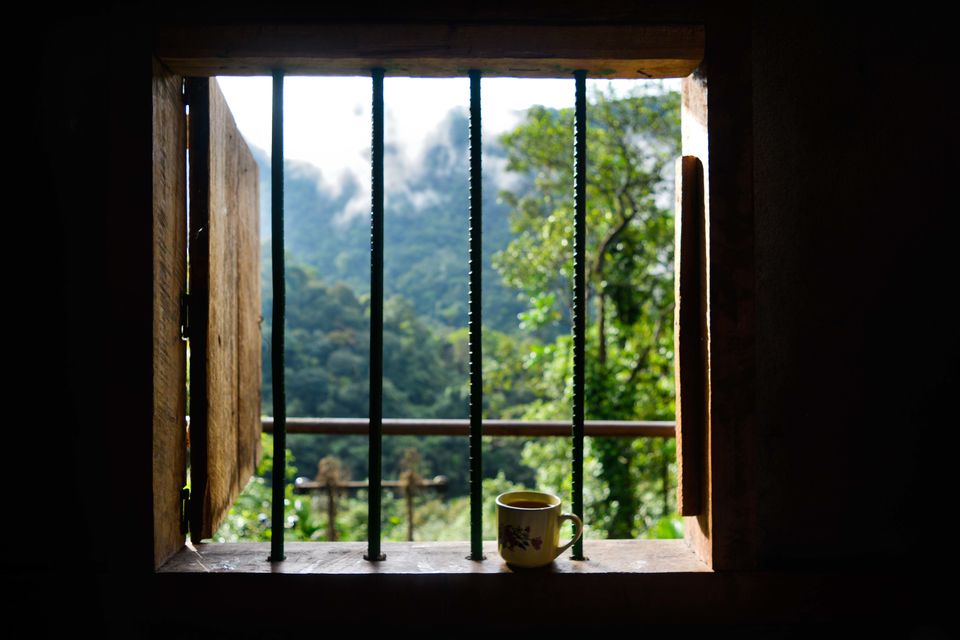
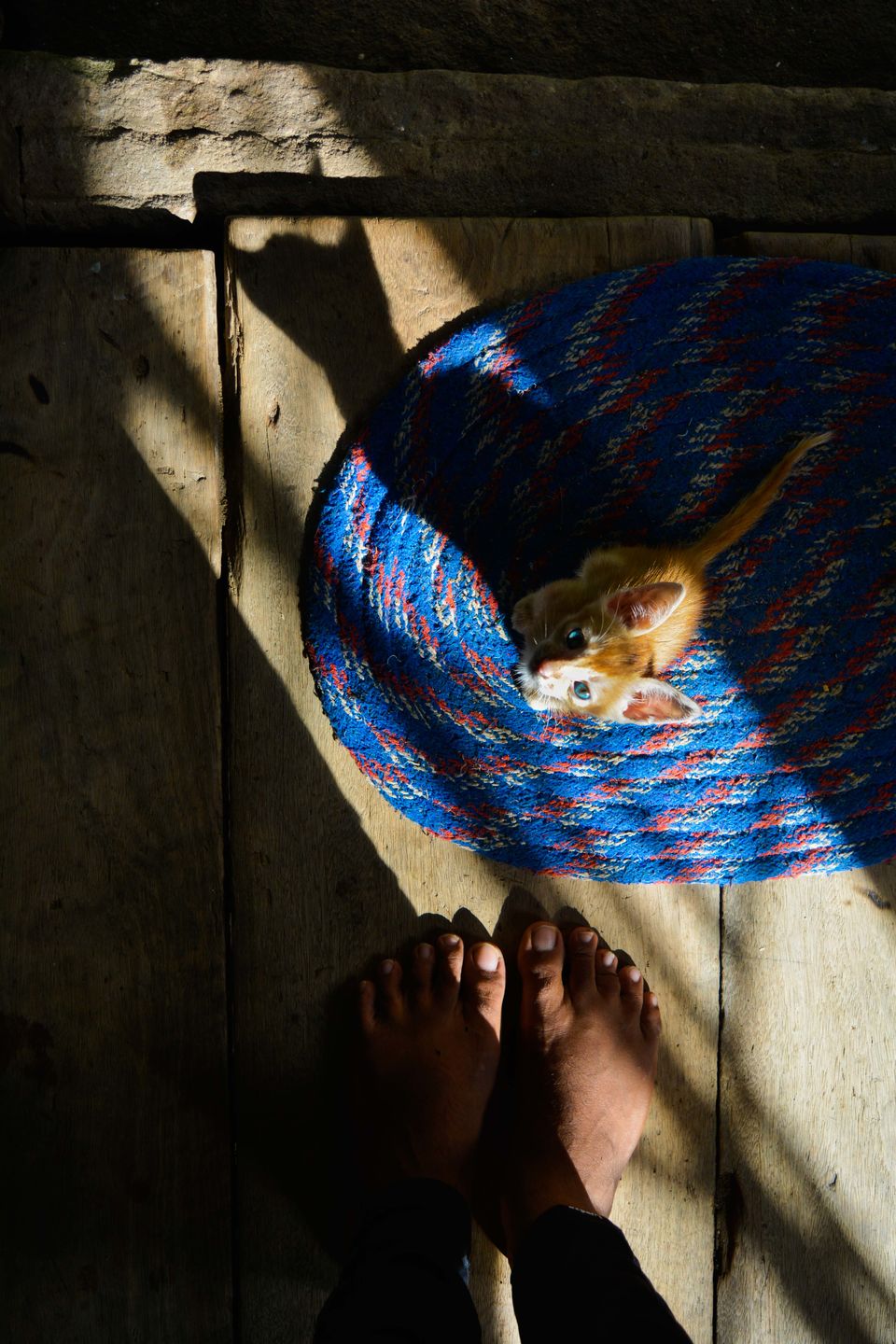
The trek back up to Tyrna took much less time than the descent, and soon we were on the way toward Dawki after retrieving our bike. For some geographical context, so far we had explored the Khasi hill ranges of Meghalaya, and now were heading toward the Jaintia hill region. The landscape and climate is slightly different between both, with the Jaintia hills proving to be testimony as to why Meghalaya is called the Scotland of the East. I’ll let the photographs show you why.
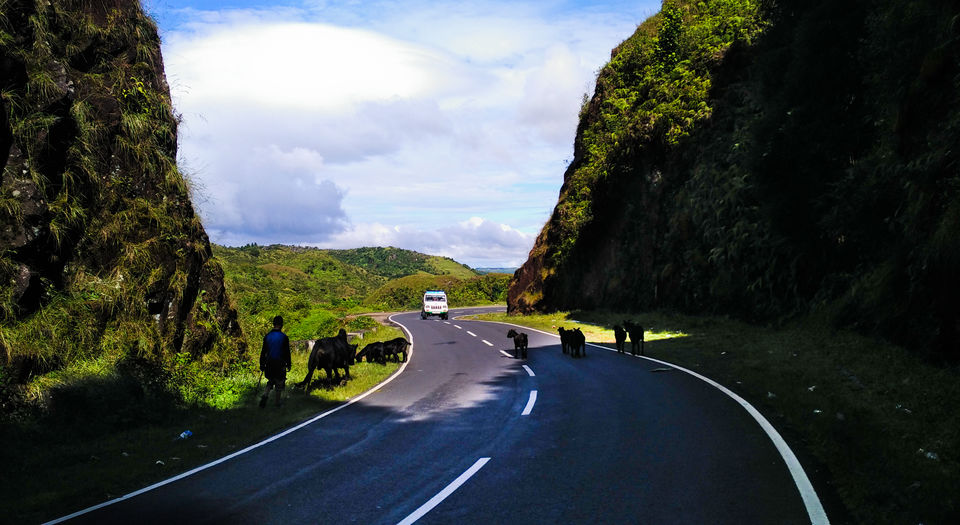
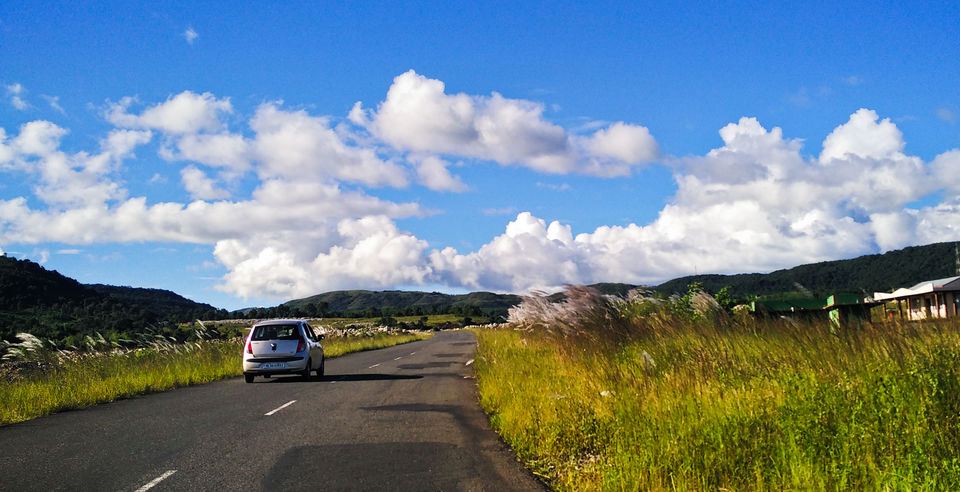
Dawki is a small town located right at the border between India and Bangladesh. Little did we know that there are no hotels or homestays in this town, and as it was already late evening when we reached, a few friendly BSF officials helped us find a local man, Ray, who rented out a tent right on the banks of the Umngot river! Though we were apprehensive about safety, we were assured by the presence of the BSF watch tower nearby. Once all the tourists had left, and the sun had set well, we took a dip in the river in the moonlight, staring into the distance where we could see the line of lights that marked the border of Bangladesh.
Day6:
Dawki - Krang-shui falls – Shillong

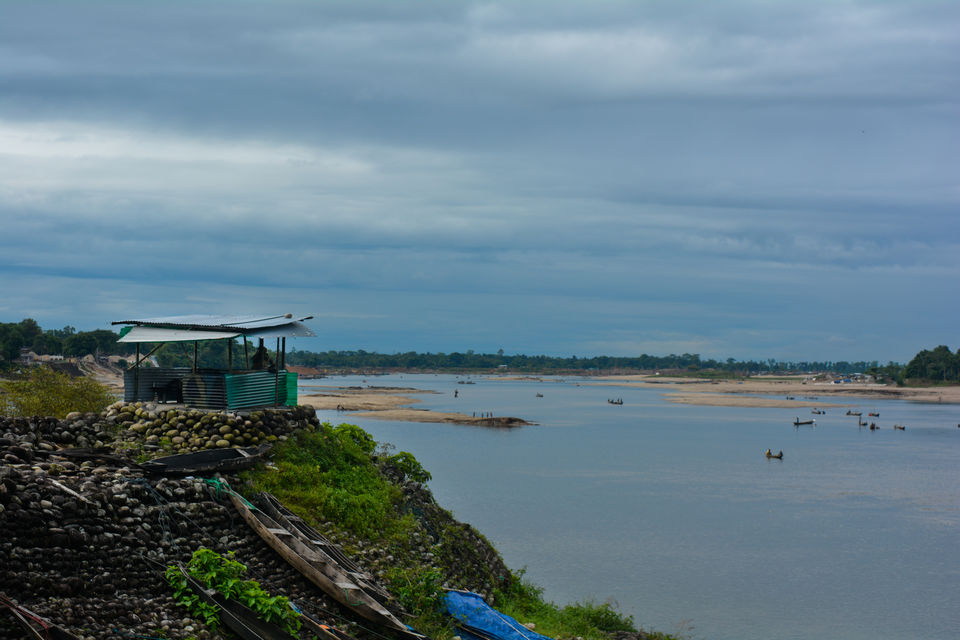
Ray had promised to take us fishing in the turquoise blue river early morning, but because of rains that had lasted all night, the water was a deep muddy-brown! Nevertheless, we helped Ray remove water from his boat, and tried our hand at fishing for a good-hour, before giving up and heading to the river-side dhaba that served hot pooris and channa, while Ray told us about how this part of the India-Bangladesh border was very friendly.
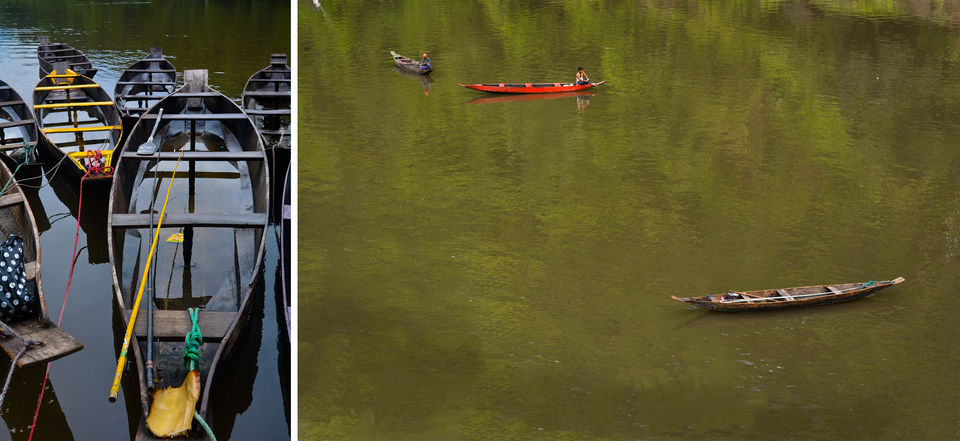
From Dawki, we decided to head back to Shillong, with just one stop on the way at a cave waterfalls, Krang-shui. Curving roads by rice fields, Meghalaya is a surprise on every bend.

A short hike leads toward Krang-shui falls. You can stand right behind the falls, within the caverns and watch the water fall in front of you. We had lunch at the entrance to the falls, with a view of rolling green hills in the distance, wishing we never had to say farewell.
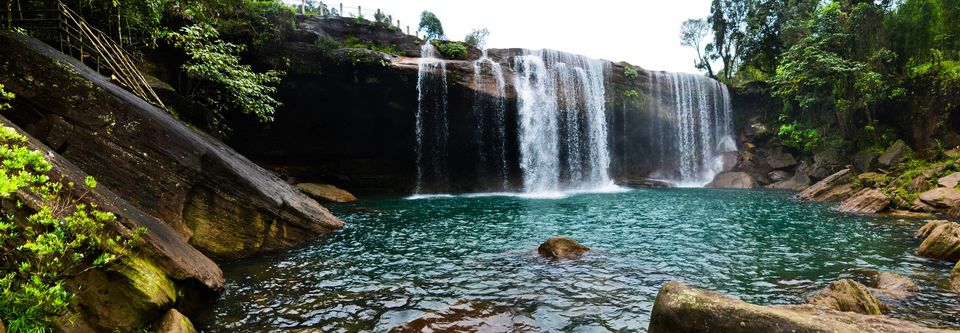

After seven days of raw wilderness, we had grown accustomed to the silence, the chill, the sharp sun, the solitude- it wasn't easy, but it was worthwhile; And now, it was time to say goodbye.
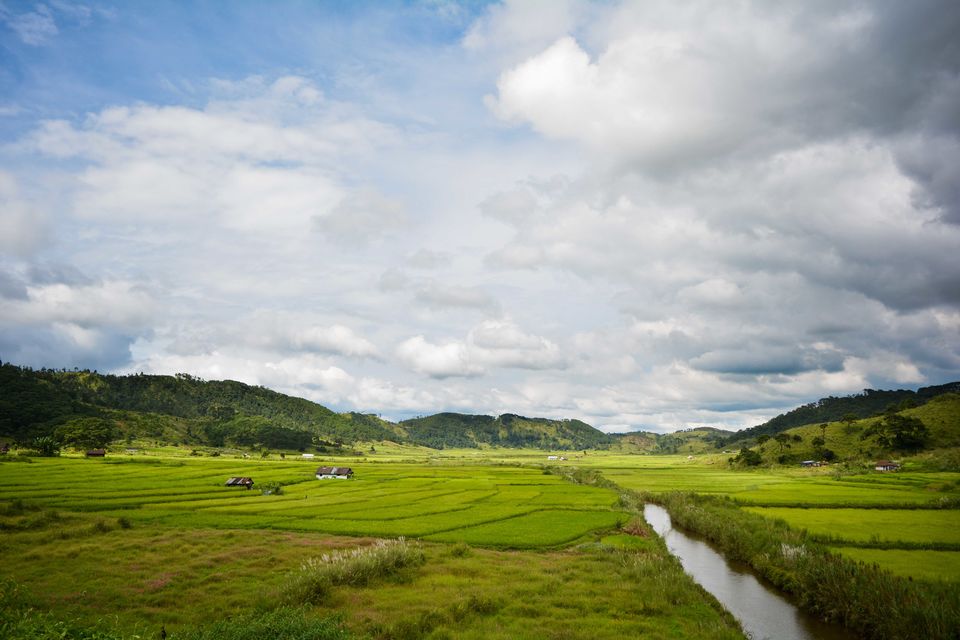
How to Reach:
Daily flights ply from Chennai to Guwahati
From Guwahati, you can rent a bike/car to be self-sufficient throughout your trip. Highly recommended for the many pits tops you’ll be taking once on the road. Word of caution, though, the roads are great but unless you have previous experience riding in mountainous roads, be careful on those U-bends. Helmets are mandatory, by law, both government and human.
Best time to visit:
Cherrapunji, Meghalaya is quoted to be the rainiest place on Earth, but September is the time when the monsoon has JUST stopped - so except for the occasional drizzles, there's nothing to worry about. The rivers are full and leaves fresh, just the right time to visit, in my opinion.
General tips:
- The Khasi hill tribes follow matriarchy, which means the women handle the principal earning for the family. It is overall a safe environment for women solo-travellers, though it is always advisable to carry pepper-spray and other safety equipment.
- While going on unplanned trips is more adventurous, I advise advance-booking the homestay at Nongriat during tourist season. Accommodating and food is very basic, but neat, and remember these are villagers opening their homes to you, so be kind and respectful of their food and lifestyle. You will be rewarded with their warmth.
- Do NOT litter anywhere within the jungle. Tha Khasi are very particular about respecting the environment.
- Carry cash as much as possible. ATMs are available in Shillong, and after that, not very much.





